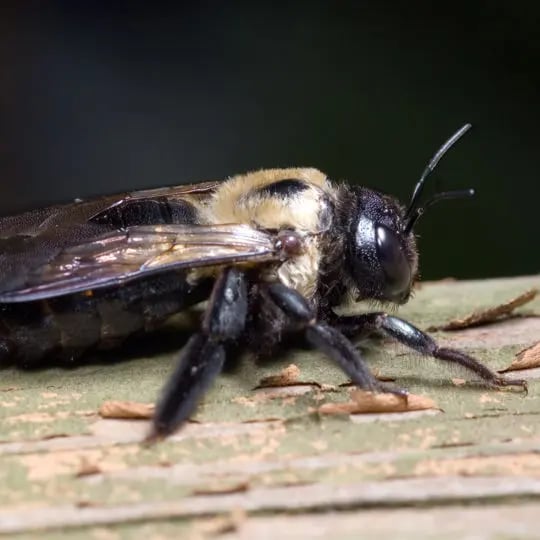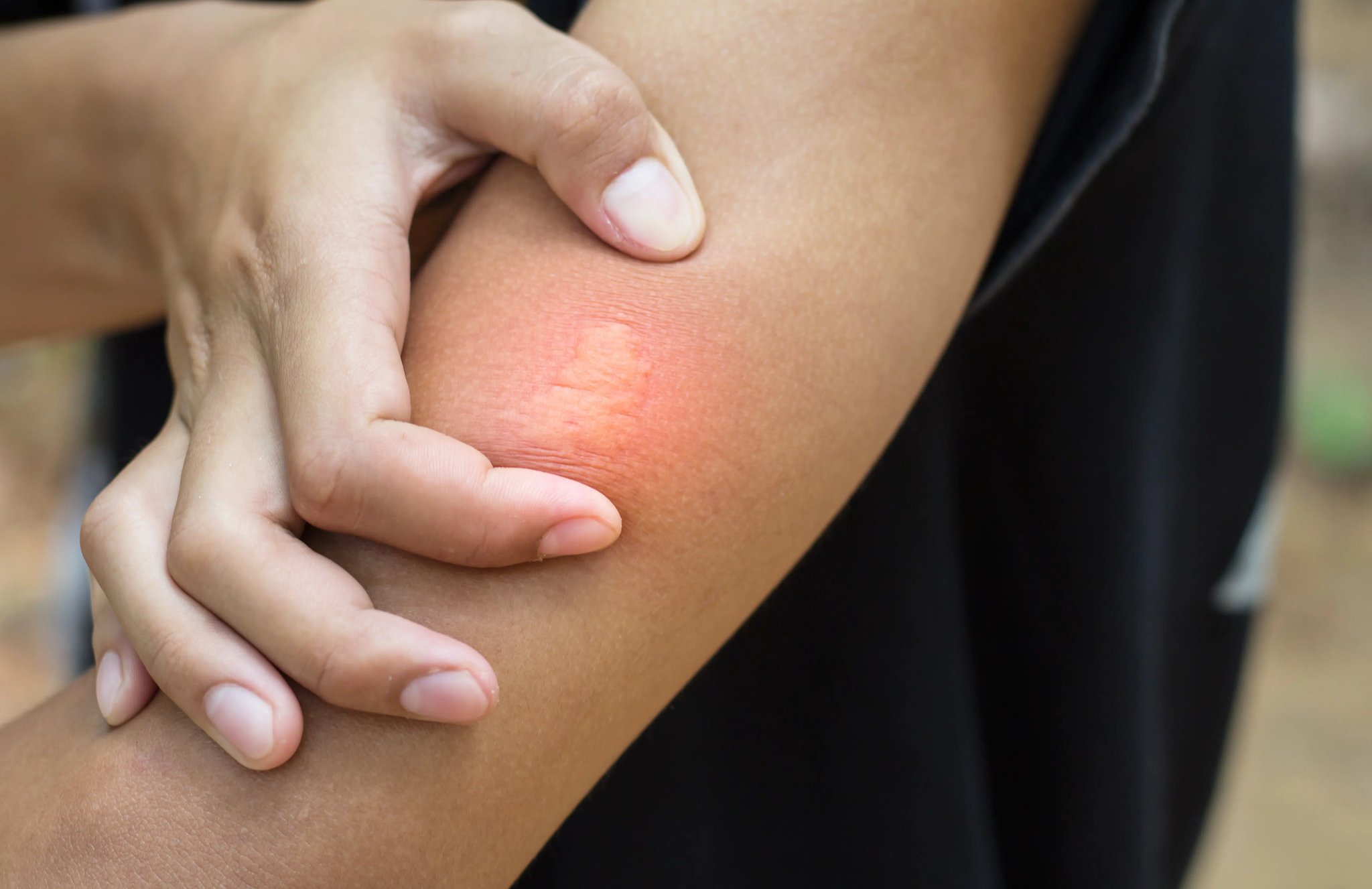Do Carpenter Bees Sting?
What You Need to Know About This Stinging Pest

When you see a honeybee, you probably aren’t worried about a sting. That yellowjacket might leave you running in the other direction to avoid getting poked by its stinger. What do you do when you see a carpenter bee? Is this pest a friend or foe? Learn if carpenter bees sting and what you need to know about their behavior.
Do Carpenter Bees Sting?
Yes, carpenter bees do sting. However, it’s not a common behavior, so you don’t need to add them to your list of stinging pests to fear if you leave them alone.
Carpenter Bee Sting 101
There are a few things you need to know about carpenter bee stings:
- Similar to other bee stings, you will immediately feel a sharp pain and burning sensation at the site of the sting.
- Carpenter bees do not lose their stinger, so they are able to sting more than once.
- Symptoms of a sting should be gone within 24 hours.
Why Do Carpenter Bees Sting?
Female carpenter bees have a painful sting, but fortunately for you, they rarely use this ability. They only sting if provoked by touching or handling, so you are likely safe as long as you don’t make them feel threatened, whether accidentally or purposefully. Male carpenter bees do not have stingers, but that won’t stop them from trying to make you think they do! They are territorial and may hover in front of your face aggressively to tell you to back off.
How To Treat a Sting
According to Healthline, most people can treat a carpenter bee sting at home if they don’t have a bee sting allergy. There are a few things you can do to prevent infection and make yourself more comfortable:
- Clean the area using soap and lukewarm water to prevent infection.
- Use a cold compress to soothe inflammation and keep the swelling down.
- If painful, consider taking over-the-counter pain medication like ibuprofen or acetaminophen.
- Use an antihistamine cream to reduce swelling.
You should seek medical help immediately if you have any signs of a bee sting allergy like difficulty breathing, a swollen tongue, nausea, dizziness, or a loss of consciousness. It’s also a good idea to call your doctor if you were stung multiple times.
Ways to Avoid Carpenter Bee Stings
Fortunately, there are effective ways to prevent carpenter bee stings:
- Ignore a lone carpenter bee. As carpenter bees only sting when threatened, your best bet is to ignore a carpenter bee if it crosses your path. If the insect is curious about you and wants to come close, simply stay still and wait for it to buzz off on its own.
- Get rid of nests immediately. While you can ignore a lone carpenter bee or two, if you notice too many buzzing around, you likely have a nest somewhere on your property. Carpenter bees tend to be important pollinators, so like some types of bees, it’s best to encourage them to move away rather than kill them all off. Fortunately, there are some carpenter bee-friendly ways to get them out of your space.
- Keep your outdoor space tidy. Dispose of any garage immediately, as they are attracted to fruit juice, fruit pits, and other sweet snacks.
- Call Green Pest Solutions. We know the safest way to remove carpenter bees and other stinging pests from your home to protect your family from dangerous insects. Give us a call today at 855-312-7157.